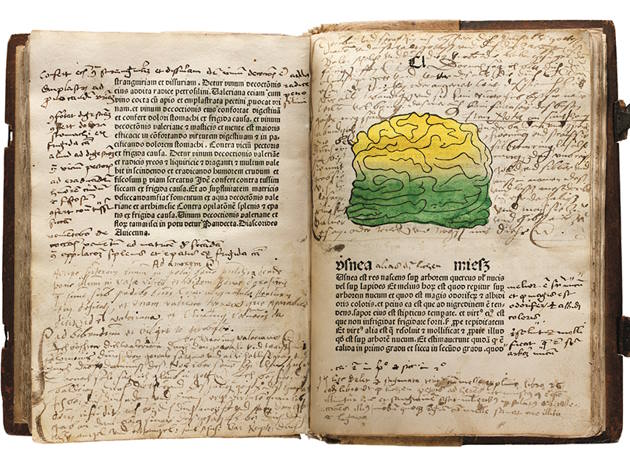
The National Academy of Lincei Library presents a suggestive exhibition dedicated to a new botanical knowledge of the early modern age and the dawn of the "new science", freed from the typical medical-pharmacological purposes of the Middle Ages.
The exhibition, curated by Michael Jakob and Lucia Tongiorgi Tomasi, winds through two related sections with numerous volumes from the Peter Goop of Vaduz (Liechtenstein) Collection and manuscripts, printed books and preserved documents in the Academy Library.
In the first section, you can admire the collection of botanical texts of Goop, the most important private one in the world on the subject, which includes a significant group of incunabula - Kräuterbücher, printed herbaria - published between 1470 and 1500. On display, some splendid 15th-century editions, such as the Historia naturale by Pliny, translated by Cristoforo Landino, the De Re Rustica by Cato, Varrone, Columella and Palladio, and De Virtutibus Herbarum by Odo de Meung, flanked by the canonical text on agriculture by Pietro De' Crescenzi in the editions of Louvain of 1483 and Vicenza of 1490. There are also examples of the first "encyclopaedias" that describe aspects of the world of nature, such as the Liber de Proprietatibus Rerum by Bartolomaeus Anglicus and the Buch der Natur by Konrad von Megenberg.
The triad of the so-called "herbariums of Mainz" is displayed with the editio princeps of each one and the valuable 16th-century essays illustrated by "fathers of botany" such as Brunfels, Fuchs, Bock and Mattioli.
Two works from the Peter Goop Collection assume particular prominence: the Liber de arte distillandi, de simplicibus. Das buch der rechten kunst zu distilieren by Hieronymus Brunschwyg with the stamp “Cesi-Albani”, and the imposing Hortus Eystettensis by Basilius Besler. These two volumes mark the transition to the second part of the exhibition path, dedicated to the rare relics kept in the archives of the Biblioteca dell'Accademia Nazionale dei Lincei e Corsiniana.
The pivotal date between the two parts of the exhibition, the year 1613, is dutifully highlighted. Among the texts on display are the small volume of tables of Mesoamerican plants, Mexicanarum Plantarum Imagines, and the Mexican Treasure Rerum medicarum [...], with autograph notes by the founder of the Academy, Federico Cesi. The sheet of Melissographia, engraved by Matthias Greuter, and the Treatise on fossil wood by Francesco Stelluti are of great visual impact. Some rare volumes kept in the Library of the Botanical Garden of Bologna, from Federico Cesi's ancient book collection, two botanical tables from the Dal Pozzo collection, and the portrait of Federico Cesi painted between 1610 and 1613 complete the exhibition.
Cover image: Herbarius, 1485, Peter Goop Collection, photo Naomi Wenger
Informations
Dal 5 maggio al 3 luglio 2023
dal martedì alla domenica dalle 10 alle 19 (ultimo ingresso alle 17)
Chiusura straordinaria: 2 giugno, 23 giugno e 29 giugno.
Apertura straordinaria: 3 luglio
 Condividi
Condividi











































